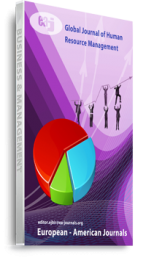The study investigate human resource for health management practices on training and development between secondary and tertiary healthcare facilities. The study adopted a descriptive research design. The independent t-test analysis showed that the calculated t- value of 2.412 was greater than the critical t-value of 1.96 at 0.05 alpha level of significance. Specifically, on in-service training, 35.7% and 19.7% of secondary healthcare respondents reported not practiced and practiced to a little extent respectively. This shows significant differences from responses in the tertiary healthcare facilities with only 17.6% and 21.3% respectively reported corresponding responses (that is, negative responses of 55.4% and 38.9% for secondary and tertiary respectively). This observed trend in the secondary healthcare facilities was affirmed by qualitative responses where secondary level respondents verbalized non provision for in-service training. However, in both States, secondary healthcare facilities key informants affirmed the assistance and role of development partners in staff training and development but that such trainings are in their (partners’) area of interest/interventions. It was recommended that bi-annual training, retraining and development of the health workforce should be made an area of utmost priority particularly at the secondary level of care. This is important considering the paucity in stock of HRH and emerging challenges emanating from the trend of disease outbreaks and occurrence.
Keywords: Human resource, cross river state and Ebonyi state., health management practices, secondary and tertiary healthcare facilities, training and development

